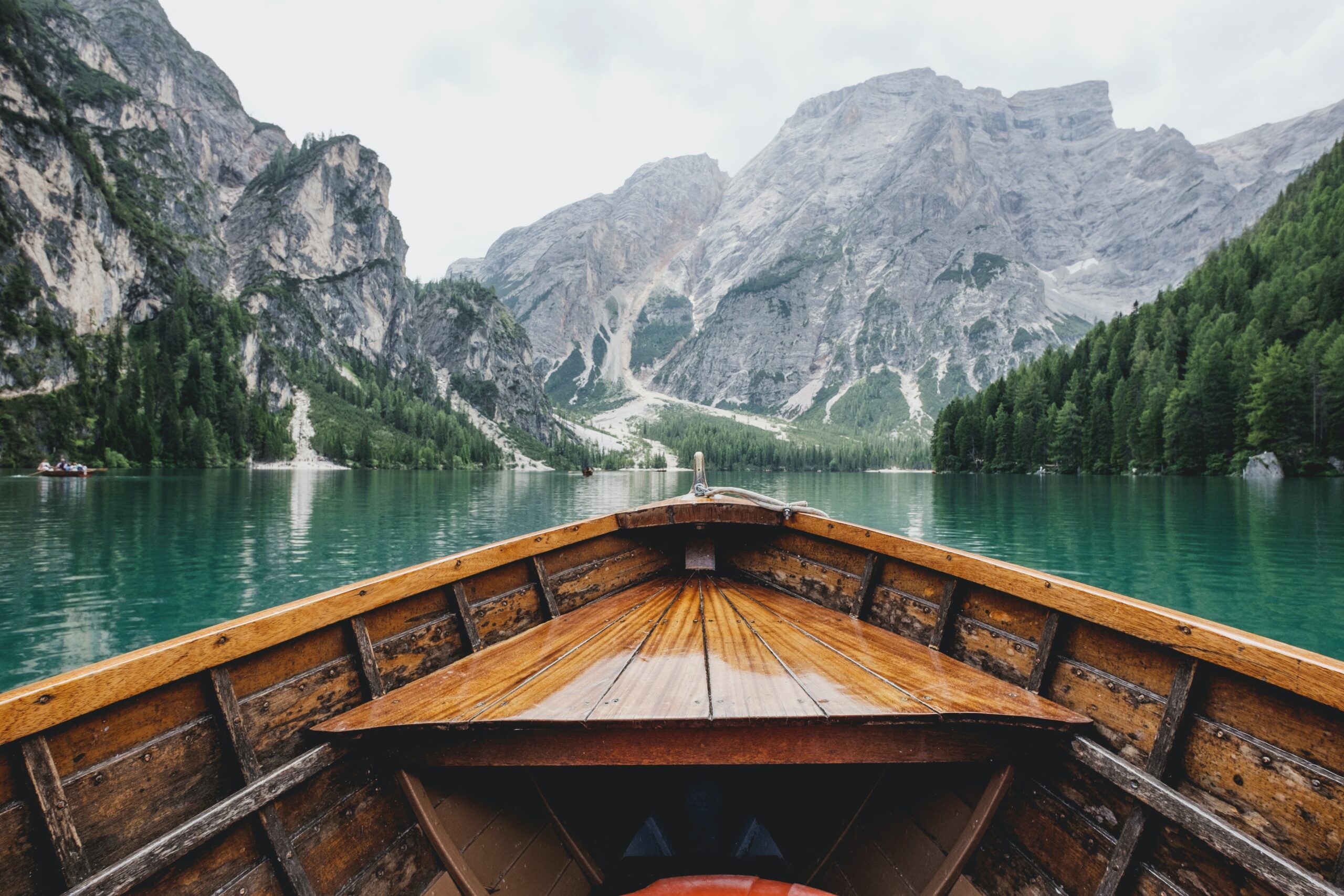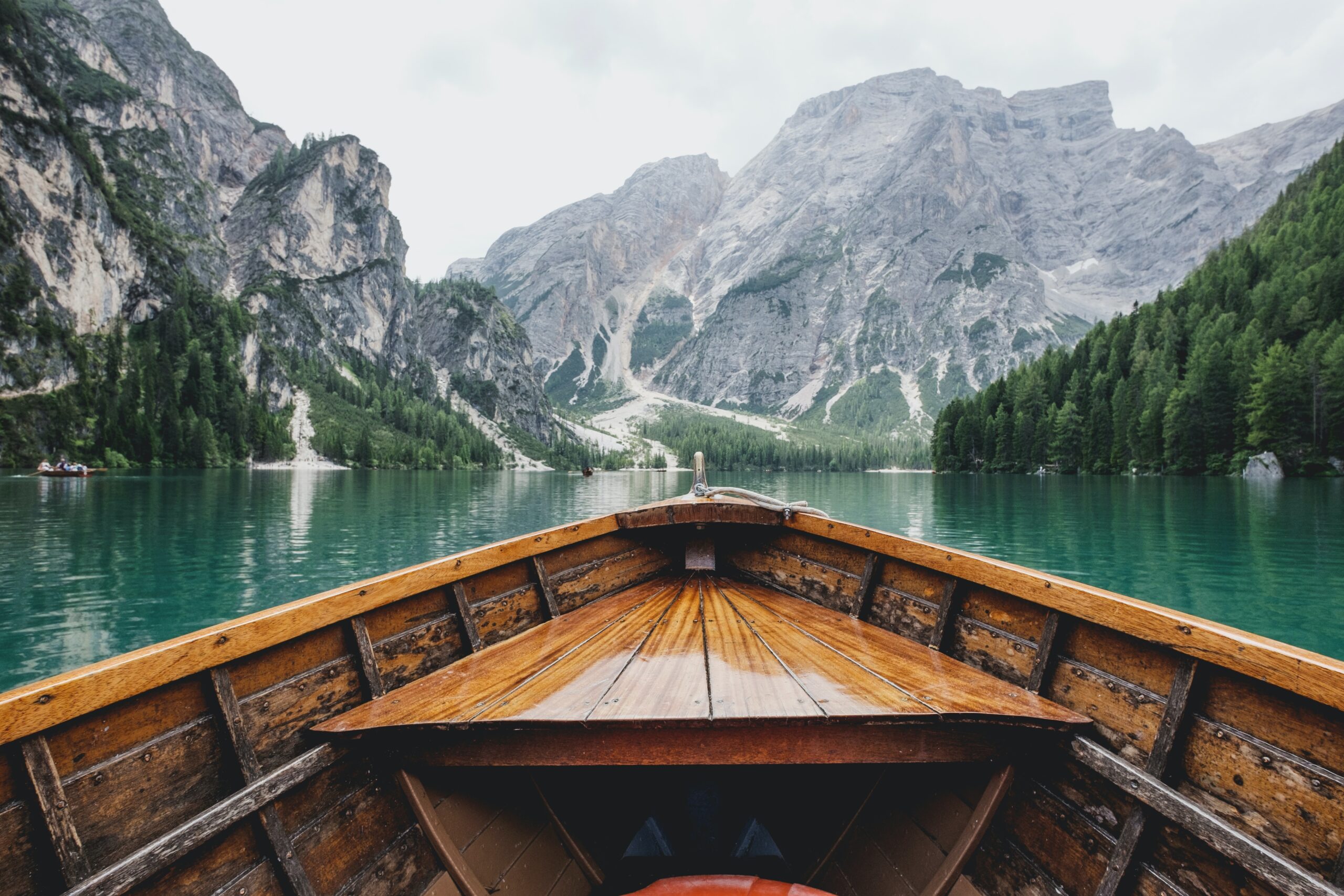Imagine standing on the shores of a majestic lake, surrounded by towering pine trees and breathtaking mountains. As you gaze out onto the crystal-clear water, you can't help but wonder just how big this magnificent body of water really is. Shasta Lake, nestled in northern California, is a sprawling reservoir that spans an impressive expanse. In this article, we will quench your curiosity and provide you with fascinating details about the sheer size of Shasta Lake. Prepare to be awe-inspired by its vastness and discover why it holds such a special place in the hearts of nature lovers and adventure seekers alike.

Overview
Shasta Lake, located in northern California, is a remarkable man-made reservoir that has become a beloved destination for nature enthusiasts and adventure seekers alike. Nestled in the Shasta-Trinity National Forest, this picturesque lake boasts breathtaking beauty and a vibrant ecosystem. Its creation, size, and location make it a must-visit destination for anyone seeking outdoor adventure and tranquility.
Location
Shasta Lake is situated in Shasta County, California, about 10 miles north of the city of Redding. Its central location in the state makes it easily accessible for visitors and locals alike. The lake stretches across an impressive 365 miles of shoreline, offering ample opportunities for exploration and relaxation.
Creation
Shasta Lake owes its existence to the construction of the Shasta Dam, which was completed in 1944. The dam, standing at an impressive height of 602 feet, was built across the Sacramento River and its tributaries, flooding the surrounding valleys and canyons and subsequently forming the massive reservoir we see today. The construction of the dam was a significant feat of engineering and laid the foundation for the creation of Shasta Lake.
Size
Shasta Lake's size is nothing short of awe-inspiring. It spans a whopping 30,000 acres, making it the state's largest reservoir in terms of surface area. Its maximum depth reaches an impressive 517 feet, allowing for a vast volume of water to be held within its boundaries. With its immense size, Shasta Lake has become a haven for outdoor activities and a paradise for nature lovers seeking to immerse themselves in its beauty.
Geography
Topography
Shasta Lake is set amidst a diverse topography, characterized by rolling hills, picturesque valleys, and towering mountains. The surrounding landscape is a blend of lush forests, rocky cliffs, and golden meadows, creating a breathtaking backdrop for the tranquil waters of the lake. The topography of the area contributes to the stunning views and diverse ecosystem that Shasta Lake offers.
Water Sources
The primary water source for Shasta Lake is the Sacramento River, along with its tributaries such as the Pit River, McCloud River, and Squaw Creek. These water sources ensure a constant flow of fresh water into the lake and contribute to its vast size and stability. The inflow from these rivers also supports the lake's ecosystem, providing crucial nutrients and sustaining a diverse array of wildlife.
Climate
Shasta Lake experiences a Mediterranean climate, characterized by hot, dry summers and mild, wet winters. Summers are typically warm and sunny, with temperatures ranging from the high 80s to low 100s Fahrenheit. Winters bring cooler temperatures and occasional rainfall, creating the ideal conditions for the replenishment of the lake's water levels. The climate of the region adds to the allure of Shasta Lake, offering pleasant conditions for outdoor activities year-round.
Features
Mount Shasta
One of the most prominent features in the vicinity of Shasta Lake is Mount Shasta, a majestic volcano standing at an elevation of 14,179 feet. Mount Shasta's towering presence adds a dramatic backdrop to the lake's scenery, creating a picture-perfect setting. This magnificent peak is a popular destination for hikers, climbers, and nature enthusiasts who are drawn to its beauty and serene atmosphere.
Shasta Dam
A true engineering marvel, the Shasta Dam is an integral part of Shasta Lake's infrastructure. Standing as the second-largest concrete dam in the United States, it is an imposing structure that demonstrates mankind's ability to shape the natural world. The dam serves multiple purposes, including flood control, irrigation, and hydroelectric power generation. Its creation has transformed the landscape, giving birth to the vast reservoir that enchants visitors every year.
Reservoir
Shasta Lake itself is undoubtedly the star attraction. With its shimmering blue waters stretching as far as the eye can see, it captures the imagination and beckons visitors to partake in the numerous recreational activities it offers. The lake provides a playground for boating, fishing, swimming, and kayaking, ensuring that there is never a shortage of adventures to be had. The reservoir's sheer size guarantees that there is plenty of room for everyone to enjoy the beauty and tranquility it provides.
Hydroelectric Power
Power Generation
Shasta Lake plays a crucial role in the generation of hydroelectric power. The water stored in the reservoir is released through the Shasta Dam and diverted into powerhouses, where it drives turbines to produce electricity. This clean and renewable form of energy generation helps meet the electricity needs of the surrounding communities while minimizing the impact on the environment.
Power Capacity
The hydroelectric power capacity of Shasta Lake is impressive, thanks to the height and volume of the dam itself. It has a generating capacity of over 650 megawatts, making it one of the largest hydroelectric facilities in California. The abundant water supply ensures a reliable source of power, contributing to the region's energy needs.
Power Usage
The electricity generated by Shasta Lake's hydroelectric power system is essential for powering homes, businesses, and industries in the surrounding areas. It plays a vital role in supporting the local economy and reducing dependence on fossil fuels. The clean and renewable energy harnessed from Shasta Lake's waters not only provides power but also promotes sustainable practices, benefiting both the environment and the community.

Recreation
Boating
Shasta Lake is a boater's paradise, offering unparalleled opportunities for leisurely cruises or thrilling water sports. The vast expanse of the lake provides ample space for exploring its hidden coves, secluded beaches, and pristine waters. Whether you prefer sailing, water skiing, or simply floating along on a pontoon boat, Shasta Lake caters to all boating enthusiasts, ensuring an unforgettable experience on the crystal-clear waters.
Fishing
For anglers, Shasta Lake is a haven of fish-filled waters. The lake is teeming with various fish species, including rainbow trout, bass, and catfish. Fishing can be done from a boat, the shoreline, or even by casting a line from a quiet spot on the dock. The thrill of reeling in a trophy fish against the backdrop of the stunning lake views is an experience that fishing enthusiasts cherish.
Water Sports
Shasta Lake's inviting waters also provide an ideal playground for water sports enthusiasts. From jet skiing to wakeboarding, the lake offers endless possibilities to get your adrenaline pumping. Water sports schools and rental facilities are available for those looking to try their hand at these exhilarating activities, making Shasta Lake the ultimate destination for thrill-seekers and water lovers alike.
Wildlife
Fish Species
Shasta Lake's waters are brimming with a diverse array of fish species. Anglers can find rainbow trout, brown trout, kokanee salmon, and various types of bass, including smallmouth and largemouth bass. The abundance of fish in the lake ensures an exciting and rewarding fishing experience for both seasoned anglers and those casting their line for the first time.
Birds
Shasta Lake's natural surroundings attract a wide variety of bird species, making it a paradise for birdwatchers and nature enthusiasts. Visitors may spot majestic bald eagles soaring above the lake, vibrant blue herons patiently wading in shallow waters, and the haunting call of the osprey as it hunts for fish. The lake's diverse ecosystem offers a haven for both resident and migratory birds, creating endless opportunities for birdwatching and appreciation of the avian world.
Mammals
Shasta Lake and its surrounding forests are home to an array of mammalian species. Visitors may catch a glimpse of deer grazing on the lake's shores or be treated to the sight of black bears foraging in the nearby woods. Coyotes, mountain lions, and bobcats also call this region home, adding an element of excitement and intrigue to the natural wonders that Shasta Lake has to offer.

Environmental Impact
Water Conservation
Efforts to conserve water in Shasta Lake are of utmost importance in maintaining its delicate balance and ensuring the sustainability of the ecosystem it supports. Water authorities in the region continuously monitor and manage water releases from the reservoir to strike a balance between meeting the needs of the surrounding communities and preserving the natural environment. Conservation measures implemented by visitors, such as responsible water usage and waste management, also play a vital role in preserving the lake's vibrant ecosystem.
Ecosystem
Shasta Lake's ecosystem is a complex web of interdependent organisms, each playing a unique role in maintaining its delicate balance. The lake's waters sustain a wide range of aquatic life, including fish, plankton, and other invertebrates. These species serve as a vital food source for larger predators and contribute to the overall health and biodiversity of the ecosystem. Protecting and preserving Shasta Lake's ecosystem is of utmost importance to ensure its longevity and the continued enjoyment of its natural wonders.
Drought Effects
Like many bodies of water, Shasta Lake is not immune to the effects of drought. During times of drought, the lake's water levels can decrease significantly, impacting both the recreational activities that depend on it and the ecosystem it supports. Water management authorities closely monitor and adjust water releases to mitigate the negative effects of drought and ensure the sustainability of the lake. Visitors can contribute to these efforts by practicing responsible water usage and supporting conservation initiatives.
Tourism
Visitor Centers
Shasta Lake offers visitors a warm welcome and comprehensive information at its visitor centers. These centers serve as gateways to understanding the lake's history, wildlife, and recreational opportunities. Knowledgeable staff provide guidance and recommendations, ensuring that visitors have the best experience possible. From maps and brochures to interactive exhibits, the visitor centers are invaluable resources for anyone seeking to make the most of their time at Shasta Lake.
Scenic Points
Scattered throughout Shasta Lake are scenic points that offer breathtaking views of the surrounding landscape and the glistening waters below. From towering cliffs to peaceful meadows, these scenic points provide picture-perfect settings for unforgettable moments and cherished memories. Whether you're capturing the beauty through your camera lens or simply soaking it all in, these vantage points offer a glimpse into nature's awe-inspiring wonders.
Activities
Shasta Lake beckons visitors with a plethora of activities suited for every taste and preference. Whether you're seeking a thrilling adventure or a tranquil retreat, there is something for everyone. Hiking trails wind their way through the surrounding forests, offering stunning views of the lake and opportunities to explore nature up close. Camping sites nestled in the peaceful wilderness provide a chance to disconnect from the distractions of modern life and revel in the serenity of the natural environment. The numerous outdoor activities available ensure that every visitor leaves Shasta Lake with memories that will last a lifetime.
History
Native American Influence
Before the construction of Shasta Dam and the formation of Shasta Lake, the area was home to Native American tribes, including the Wintu and Shasta tribes. These tribes had a deep connection to the land, relying on its abundant resources for sustenance and cultural practices. The legacy of these indigenous peoples can still be seen and felt throughout the region, serving as a reminder of the rich history and heritage that preceded the lake's creation.
Early Settlement
With the completion of the Shasta Dam in the 1940s, the surrounding area underwent significant development as people flocked to the region. The construction of highways, infrastructure, and residential communities transformed the landscape, shaping the growth of cities and towns in the vicinity of Shasta Lake. The early settlement laid the groundwork for the vibrant communities that exist today, serving as a testament to the resilience and determination of the people in the region.
Development
As the popularity of Shasta Lake grew, so did the development and investment in the surrounding area. Tourism became a significant industry, attracting visitors from far and wide to experience the natural beauty and recreational opportunities that Shasta Lake offers. The growth of tourism, combined with the region's focus on water conservation and environmental stewardship, has shaped the development of the area, creating a balance between economic prosperity and the preservation of the natural wonders that draw visitors year after year.
Important Facts
Record Highs and Lows
Shasta Lake has experienced significant fluctuations in its water levels throughout its history. The reservoir has recorded both record highs and lows. During periods of heavy rainfall, the water levels can rise dramatically, providing a stunning spectacle against the backdrop of surrounding mountains. Conversely, during times of drought, the water levels can decrease, revealing hidden valleys and revealing the lake's geological past. These fluctuations remind us of the power and unpredictability of nature.
Shasta Lake City
Shasta Lake City, located near the reservoir's edge, is a vibrant community that serves as a gateway to Shasta Lake's recreational wonders. With its unique blend of natural beauty and small-town charm, Shasta Lake City provides a welcoming atmosphere for visitors and locals. It offers a range of amenities, including dining options, accommodations, and convenient access to the lake's countless recreational opportunities.
Local Economy
Shasta Lake plays a vital role in the local economy, with tourism being a significant driver of growth and prosperity. The region's natural beauty and recreational opportunities attract visitors from across the country, contributing to the success of businesses that cater to their needs. The lake's hydroelectric power generation also supports the local economy, providing jobs and powering industries in the surrounding communities. Shasta Lake's strong connection to both nature and industry has created a unique economic environment that benefits residents and visitors alike.
In conclusion, Shasta Lake is a true gem of northern California, offering a remarkable blend of natural beauty, recreational opportunities, and historical significance. From its creation through the construction of the Shasta Dam to its vast size and stunning geography, Shasta Lake captivates visitors with its charm and diversity. Whether you seek adventure on the water, the tranquility of the surrounding wilderness, or a deeper understanding of the region's history, Shasta Lake has something to offer everyone. It is a destination that leaves a lasting impression and calls for return visits, as its wonders are as vast as its waters.

